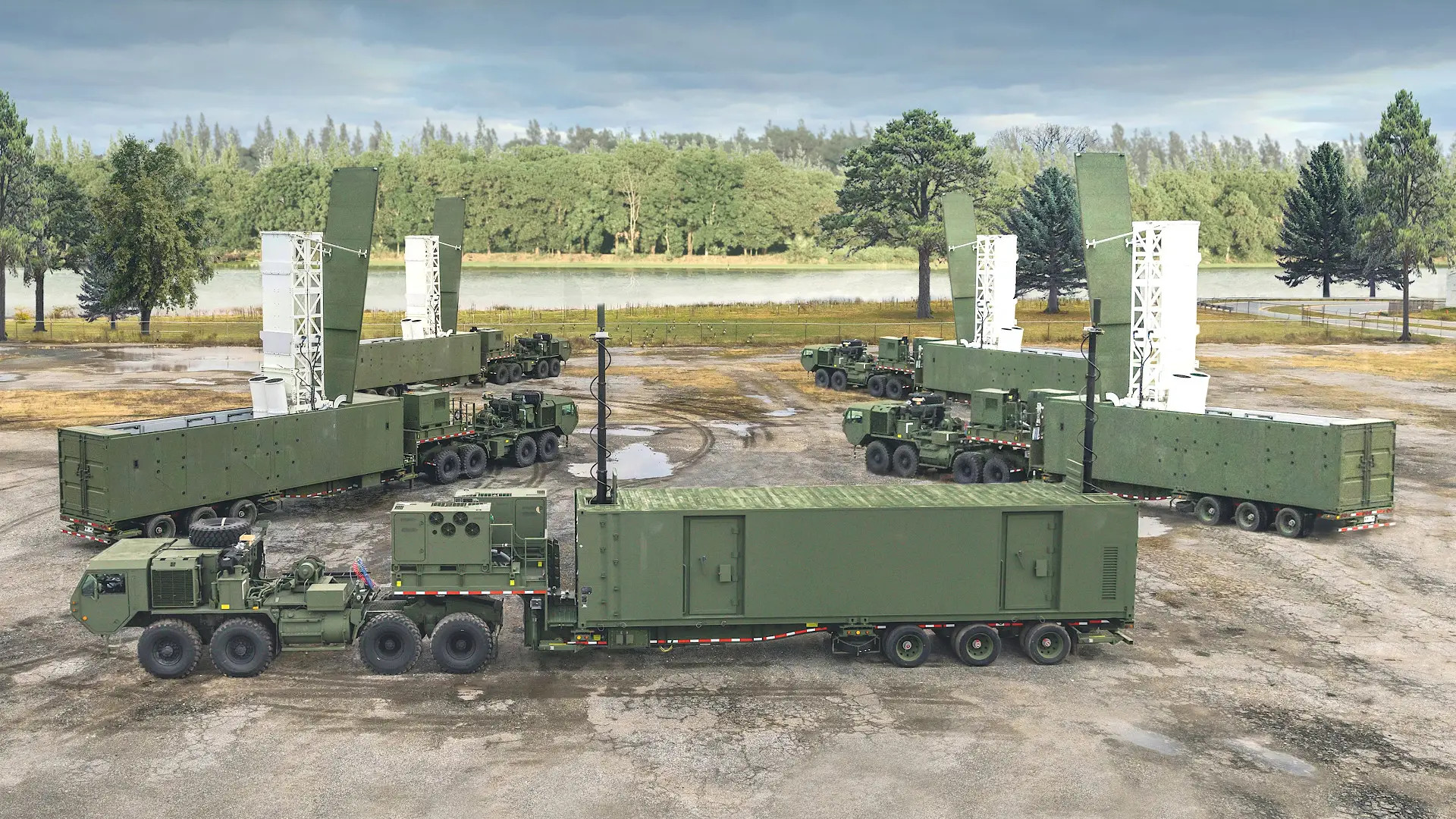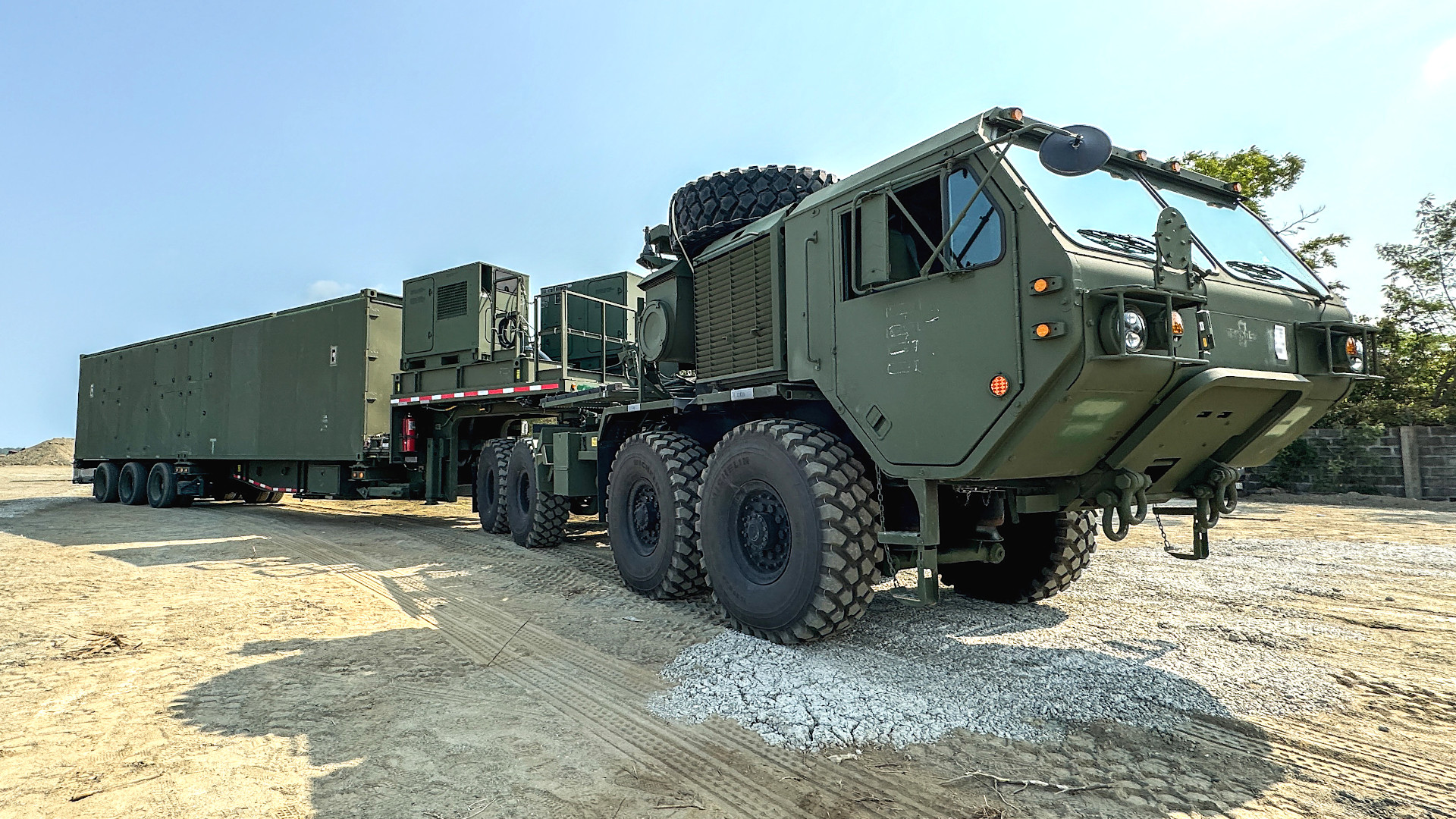The U.S. Army has sent elements of its newest ground-based missile system, called Typhon, overseas for the first time to take part in an exercise in the Philippines. Typhon can fire Tomahawk cruise missiles and SM-6 multi-purpose missiles, the latter of which will, at least at first for the Army’s needs, work in a quasi-ballistic missile land attack mode. Typhon’s arrival sends a blaring signal at Beijing and throughout the region. It is a glimpse of what’s to come as the service works through plans to permanently base these systems in China’s backyard.
Earlier today, U.S. Army Pacific (USARPAC) announced the arrival of at least a portion of a Typhon system, also known as the Mid-Range Capability (MRC), in the Philippines where it participated in Exercise Salaknib 24. The system, which touched down in the Western Pacific nation back on April 7, belongs to Battery C, 5th Battalion, 3rd Field Artillery Regiment, which is part of the Long Range Fires Battalion assigned to the 1st Multi-Domain Task Force (MDTF) at Joint Base Lewis-McChord in Washington State. The Army previously said it would send one of its Typhon systems abroad sometime this year, but had not disclosed where it would go or when.

It is unclear how much of Battery C will ultimately go to the Philippines to take part in Exercise Salaknib 24 or if there will be a live-fire demonstration of the unit’s capabilities. Pictures the Army has released so far only appear to show a single trailer-based containerized launcher towed by a tractor variant of the Heavy Expanded Mobility Tactical Truck (HEMTT) being loaded on a U.S. Air Force C-17A Globemaster III transport aircraft from the 62nd Airlift Wing at Joint Base Lewis-McChord and being unloaded at its destination. The Army’s release also only mentions one C-17A flight. This was the first time elements of the Typhon system have ever been airlifted and it took that aircraft more than 15 hours to make the more than 8,000-mile-long trip, according to the Army.

A complete Typhon battery consists of four launchers, a trailer-based mobile command post, and other ancillary vehicles and equipment, according to information the Army has previously released. Multiple C-17A sorites would be required to move a single Typhon battery.

Where in the Philippines the Typhon system components are now is also not clear. The Army only the elements of Battery C had arrived in Northern Luzon. The U.S. military currently has access to five different sites on the island of Luzon, the largest and most populous island in the Philippine archipelago and home to the country’s capital Manila.
“This is a significant step in our partnership with the Philippines, our oldest treaty ally in the region. We’re grateful to our partners in the Armed Forces of the Philippines and we’re excited to expand our security cooperation as we bring this new capability to Luzon,” Army Brig. Gen. Bernard Harrington, head of the 1st MDTF, said in a statement. “This creates several new collaboration opportunities for our bilateral training and readiness, we look forward to growing together.”
“Salaknib 24 directly supports the U.S. Indo-Pacific Command and U.S. Army Pacific efforts in enhancing bilateral U.S. land power capacity and capabilities for joint operations,” according to USARPAC release. “By bolstering our collective readiness with the Armed Forces of the Philippines, Salaknib improves our operational capabilities and strengthens the longstanding and strong U.S.-Philippine Alliance, displaying our dedication to a free and open Indo-Pacific.”
Sending even one Typhon launcher to the Philippines for this exercise is a significant demonstration of capability for the Army. As noted, the Tyhon system can be used to fire Tomahawk cruise missiles, current generation versions of which have land attack and anti-ship capabilities, as well as SM-6 missiles. As integrated on Typhon, the SM-6 is intended to be employed primarily against targets ashore and at sea essentially as a short-range ballistic missile. The Army has also described it in the past as a “strategic” weapon system that would be used against higher-value targets like air defense assets and command and control nodes.
SM-6 was originally designed as a sea-launched surface-to-air weapon and has demonstrated capabilities against various aerial threats, including ballistic missiles and novel hypersonic weapons in the terminal phases of their flights. U.S. Navy warships can also employ SM-6s against surface targets.

With Tomahawk, Typhon offers the Army a way to hold targets on land and at sea at risk anywhere within a bubble stretching roughly 1,000 miles in any direction from where it is deployed. Being able to also fire SM-6s, even just as surface-to-surface weapons, would offer additional capabilities and flexibility.
From the middle of Northern Luzon, Typhon has more than enough range to reach the southeastern corner of mainland China, as well as Hainan Island with its key naval and other bases. Chinese man-made outposts across the South China Sea would also be within range. This latter point has an additional degree of immediate significance given the current tensions between Beijing and Manila over control of the Scarborough Shoal, which lies to the west of Luzon. In 2016, an international tribunal ruled in favor of the Philippines’ claims to the shoal, a decision Chinese authorities have rejected. China’s government says the vast majority of the South China Sea, including other areas that the Philippines also claims, is its sovereign territory, a position that the vast majority of the international community rejects.
Sending Typhon by air to the Philippines also demonstrates the Army’s ability to more for more rapidly deploy these systems to forward areas in response to a crisis or contingency. In the event of a major conflict in the Pacific, such as one against China, traditional cargo aircraft, as well as large established air bases, will be prime targets. At the same time, the Air Force C-17s have significant short and rough field capabilities that would allow them to deliver Typhons (and other cargoes) to more remote and austere locations, if required. These systems could also be deployed via sealift ships, but those vessels are also expected to face heavily contested environments in any future high-end fight.
Typhon presents new challenges for Chinese forces, especially given the flexibility and responsiveness they could offer for hitting targets throughout the region in the opening phases of a conflict. At the same time, the ability of these systems to provide a persistent capability will be key, but questions about how and where they could be deployed remain. Multiple countries have said in the past that they are not interested in hosting new U.S. Army long-range missile systems like Typhon.
Sending elements of Typhon outside of the United States is also important for the Army on a broader level. This is a weapon system that the U.S. military had previously been banned from fielding under the now-defunct Intermediate-Range Nuclear Forces Treaty, or INF, with Russia (and the Soviet Union before it).
The U.S. Navy was actually the first to bring a post-INF weapon system somewhere outside of the United States when sent a very similar trailer-based missile launch system to Europe in 2022, as you can read more about here. This same containerized launcher, known as the Mk 70 Expeditionary Launcher, has also been tested on Navy ships. The U.S. Marine Corps is also fielding a ground-based Tomahawk capability, but using a completely different launch system based around a remotely-operated derivative of the 4×4 Joint Light Tactical Vehicle (JLTV). The Marines also have a version of that launcher configured to fire Naval Strike Missile (NSM) anti-ship cruise missiles.

In 2021, the Army did reactivate the 56th Artillery Command in Germany expressly to oversee forward-deployed units equipped with Typhon and other future conventional long-strike capabilities, such as the Dark Eagle hypersonic missile. This unit had commanded battalions equipped with Pershing and Pershing II nuclear-armed ballistic missiles during the Cold War prior to the INF coming into force.
All told, the appearance of the Army’s Typhon system in Luzon sends important messages to allies like the Philippines and competitors like China. It also signals a new era for the service when it comes to long-range strike capabilities.
Contact the author: joe@twz.com
